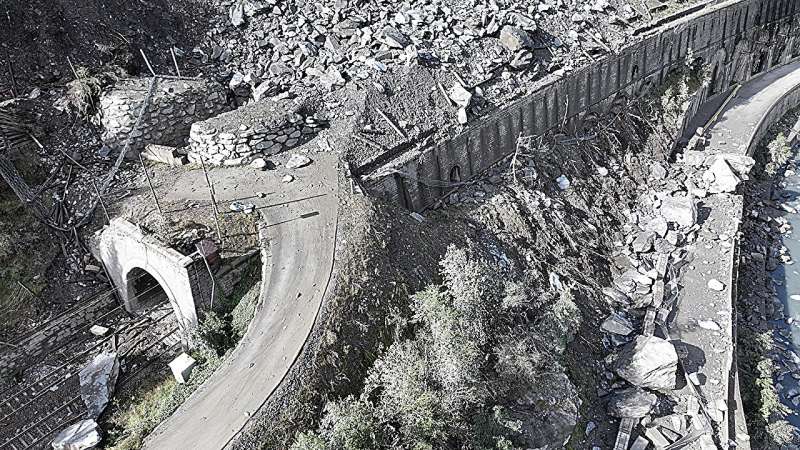This article has been reviewed according to Science X's editorial process and policies. Editors have highlighted the following attributes while ensuring the content's credibility:
fact-checked
peer-reviewed publication
proofread
Ten years of data preceding a rockfall in the French Alps suggest the need for more comprehensive monitoring systems

In August 2023, 14,000 cubic meters of sandstone and shale detached from a slope in the French Alps. This rockslide at La Praz closed a road and a major railway between France and Italy at least until the end of 2024.
Many systems that monitor unstable slopes depend solely on ground deformation measurements, using information about how much the surface of a slope moves to predict when it will fail completely. Such safety monitoring has been done at the La Praz site since 2006. But changes on the surface don't tell the full story about a slope's shifting stability or stiffness.
In a new study published in Geophysical Research Letters, Bottelin and Baillet combined deformation monitoring data from the site with passive seismic monitoring data they collected over the 10 years prior to the landslide.
By recording the slope's ground vibrations over a decade, they gathered information about the slope's fundamental resonance frequency, or the frequency at which the ground material naturally vibrates. This frequency changes depending on several factors, including the stiffness of the ground material.
Ground deformation monitoring indicated that the slope was steady between 2012 and 2018. A 0.15-meter-wide crack then formed in 2018, and seasonal changes such as fluctuating precipitation levels contributed to minor shifts throughout the subsequent years. In 2023, the deformation rate jumped from 0.3 to 1.5 centimeters per day. Fifteen hours before the rockslide occurred, it accelerated to 20 centimeters per day.
The passive seismic monitoring revealed additional information about La Praz's behavior that surface deformation monitoring was unable to detect. In the six months preceding the collapse, the researchers detected a 24% decrease in the slope's fundamental resonance frequency, indicating that the slope was becoming less stiff.
The researchers suggest that monitoring an active rock slope's fundamental resonance frequency alongside ground deformation can provide a more complete picture of the slope's behavior and help predict collapses, which could help protect lives and livelihoods.
More information: P. Bottelin et al, Original Insights Into Rock Slope Damage Processes Until Collapse From Passive Seismic Monitoring, Geophysical Research Letters (2024). DOI: 10.1029/2024GL109139
Journal information: Geophysical Research Letters
Provided by Eos
This story is republished courtesy of Eos, hosted by the American Geophysical Union. Read the original story here.
















